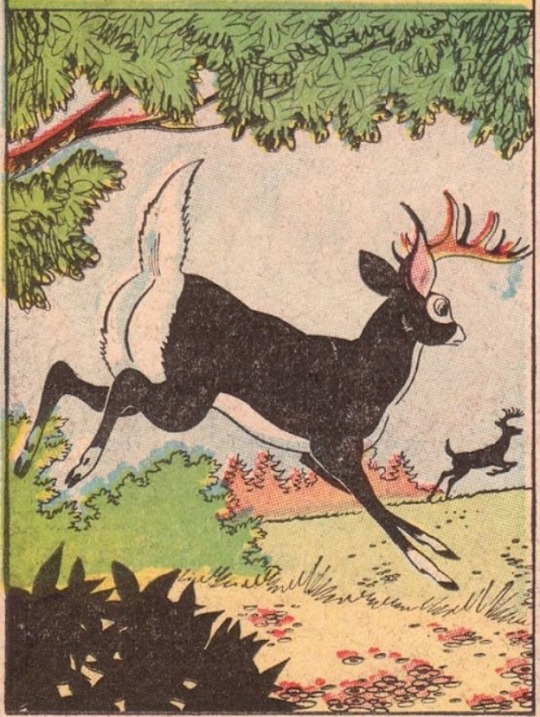#black-tailed deer
Photo
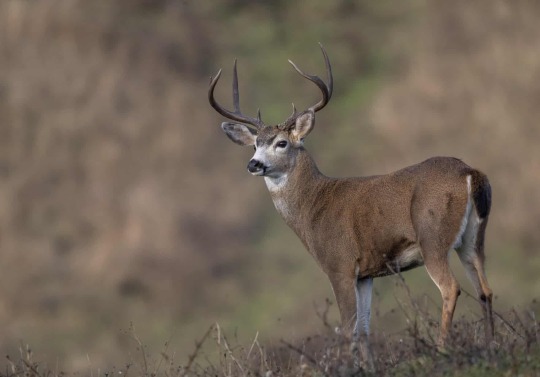
A black-tailed deer in rut keeps his eye on a nearby doe on a hillside near Elkton, rural Oregon
Photograph: Robin Loznak/Zuma Press Wire/Rex/Shutterstock
#robin loznak#photographer#zuma press wire#rex#shutterstock#black-tailed deer#deer#animal#mammal#wildlife#doe#elkton#oregon#nature
126 notes
·
View notes
Text
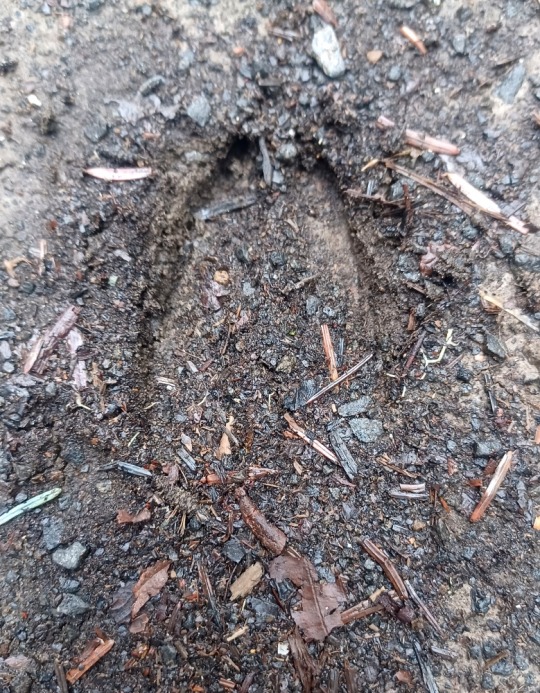
It’s Tell a Friend Friday!
Please enjoy this photo I took of the hoofprint of a Columbian black-tailed deer (Odocoileus hemionus columbianus).
Then tell someone you know about my work–you can reblog this post, or send it to someone you think may be interested in my natural history writing, classes, and tours, as well as my upcoming book, The Everyday Naturalist: How to Identify Animals, Plants, and Fungi Wherever You Go. Here’s where I can be found online:
Website - http://www.rebeccalexa.com
Rebecca Lexa, Naturalist Facebook Page – https://www.facebook.com/rebeccalexanaturalist
Tumblr Profile – http://rebeccathenaturalist.tumblr.com
BlueSky Profile - https://bsky.app/profile/rebeccanaturalist.bsky.social
Twitter Profile – http://www.twitter.com/rebecca_lexa
Instagram Profile – https://www.instagram.com/rebeccathenaturalist/
LinkedIn Profile – http://www.linkedin.com/in/rebeccalexanaturalist
iNaturalist Profile – https://www.inaturalist.org/people/rebeccalexa
Finally, if you like what I’m doing here, you can give me a tip at http://ko-fi.com/rebeccathenaturalist
#track#animal tracks#tracking#nature#wildlife#deer#black-tailed deer#mule deer#mammals#scicomm#science communication#ecology#environment#conservation#science#animals#science education
12 notes
·
View notes
Photo







followed a doe over a hillside and discovered another doe and three fawns. all of them were charmingly scruffy after the recent rain. two of the fawns had an intriguing light coat; uncertain if leucism or just a result of being wet.
#deer#i thiiiink these are#black-tailed deer#as they are definitely not fallow deer which is the other option for the area#mule deer
60 notes
·
View notes
Note
Hello! I've noticed your posts of Columbian black-tailed deer are labelled Odocoileus columbianus columbianus, and sitka black-tailed deer are Odocoileus columbianus sitkensis. I've seen literature which considers both to be a subspecies of mule deer (Odocoileus hemionus)—naming them Odocoileus hemionus columbianus and Odocoileus hemionus sitkensis respectively—and so have wondered if you might share your reasoning for your taxonomic schema. Thank you, and thank you for the wonderful posts!
Hi! Glad you're enjoying the ungulates :)
Regarding the status of the black-tailed deer, the traditional position is that the two subspecies belong to the mule deer, O. hemionus, as each other's closest relatives. Following the genetic trees established by this paper (which, I believe, has also contributed to work like the resurrection of Pudella and description of Pudella carlae earlier this year), however, the two black-tailed deer are recovered as sister to one another, but not to O. hemionus.
The authors note that it is possible that this may be because of incomplete lineage sorting in the fairly-young North American Odocoileus radiation, or because of the absence of robust nuclear DNA data from the genus. While the authors refrain from elevating O. columbianus to species status pending further results, the taxonomy used on this blog is not tied to any one particular source, is not meant to be authoritative, and follows my own taxonomic inclinations. I tend to take a "splitter" position, and as black-tailed deer have long been recognized as distinctive relative to (other) mule deer, I tentatively favor recognition of a separate Pacific coastal species of dark-tailed Odocoileus. I have recently acquired some additional recent papers on mule deer taxonomy and genetic structure, and as I make my way through these -- and further research is done on the rather confused relationships of New World deer -- I will reevaluate my opinions should the scale tip harder toward the position that the black-tailed deer are within O. hemionus.
Paper linked above is:
Gutiérrez, EE, KM Helgen, MM McDonough, F Bauer, MTR Hawkins, LA Escobedo-Morales, BD Patterson, and JE Maldonado. 2017. A gene-tree test of the traditional taxonomy of American deer: the importance of voucher specimens, geographic data, and dense sampling. ZooKeys 697:87-131.
#posting about taxonomy#asks#Odocoileus hemionus#mule deer#Odocoileus columbianus#black-tailed deer#Cervidae#deer
8 notes
·
View notes
Text

Columbian black-tailed deer (Odocoileus hemionus columbianus).
#happy little bonus because despite the bioluminescent mushrooms being an excellent solution to natural will-o'-wisp#I feel I may actually prefer the piece without them#but gotta keep the theme#realHum#Art#Drawing#deer#deer art#Columbian black-tailed deer#Columbian blacktail deer#Columbian blacktail#black-tailed deer#blacktail deer#blacktail#Odocoileus hemionus columbianus
9 notes
·
View notes
Photo

i swear i draw other animals too
just some skeletal warm up-ish things, trying to nail down some proportional and anatomical consistencies and differences between species
#art#deer#cervid#cervidae#cervine#skeleton#red deer#white-tailed deer#fallow deer#water deer#mule deer#black-tailed deer
47 notes
·
View notes
Text
This magnificent black-tailed deer stag, was enjoying itself in the local downtown park, with its family of multiple does and fauns.

Photo by Xer S. Rowan, Creative Commons Attribution license
I take photos for the love of photography, and I share them under a free-to-use-as-long-as-I-am-properly-credited license. I'm disabled, neurodivergent, and living on a poverty-level fixed income. If you'd like to enrich my life a little, I have wishlists.
#deer#stag#black-tailed deer#deer photography#creative commons photography#free stock images#original photography on tumblr#creative commons#photography#urban wildlife#wildlife photography
0 notes
Link
Columbian black-tailed deer range from southern British Columbia to Southern California, and as far east as the Cascade Range and southern Sierra Nevada. They are native to this archipelago. They are also wildly out of balance. By the late 1800s, foreign settlers had exterminated the islands’ cougars and wolves, the deer’s primary predators, and alienated Indigenous people from their traditional deer hunting grounds. Over the past century, wildlife managers here and across the continent encouraged the proliferation of all deer species—popular game animals. More recently, changes in regulations and cultural attitudes have resulted in a dramatic drop in hunting. Deer have never had it so easy. Martin estimates that their population on the islands is now 10 times what it was before colonists arrived.
Here and there, oceanspray shoots up like topiary umbrellas. Indigenous people used these flowering shrubs, also known as ironwood, for making tools and utensils. Well past two meters tall, these specimens are old-timers, Martin explains, up to 100 years in age, that have been relentlessly clipped and shaped by deer who swim between islands. Few, if any, new oceanspray plants survive because deer eat them before they can establish. It’s the same for other bushes and flowering plants. Seedling and sapling trees often meet a similar fate. Native deer prefer to browse native fare, especially succulent flowering plants, giving unpalatable invasive plant species an edge. Gone too are the native, perennial, tussock-forming grasses that some birds favor for nesting. What the deer leave behind is an impoverished understory dotted with moss and thorny Himalayan blackberry. And the evidence of deer overbrowsing reaches well beyond the trees.
Martin leads me to a meadow near the beach where the sun illuminates a grassy field of vibrant green. While I take in the inviting scene, she conjures a vanished world of purples and pinks, the trill and hum of pollinating birds and bees—the way this meadow used to be. Martin grew up just 22 kilometers north of here, on Saltspring Island, in the 1970s. “There were places you could be knee-deep in wildflowers,” she recalls. Now, with the proliferation of deer, development, and other stressors, “those places are long gone.” They’ve been replaced by a carpet of invasives, including European orchard grass. It’s a process repeated throughout the archipelago, she says, and wherever overabundant deer are found.
#history#colonialism#climate change#ecology#environmentalism#animals#zoology#wildlife conservation#canada#usa#gulf islands#d'arcy island#salt spring island#deer#black-tailed deer
1 note
·
View note
Text
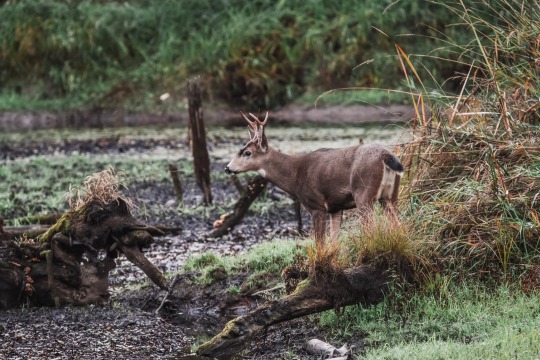
Buck contemplating a muddy crossing - in the end he went for it!
#original photography#original photographers#artists on tumblr#pacific northwest#hiking#nature#washington#nikon#pnw#orofeaiel#wildlife#animals#deer#buck#forest friends#swamp#creatures#columbian black-tailed deer#i think
164 notes
·
View notes
Text

a little fawn, just carved last night while I couldn’t sleep
#accidentally spattered this trivet with black but I just went with it#reserved#pottery#ceramics#ceramic#sgraffito#ceramic art#carving#timelapse#ceramic trivet#fawn art#fawn#deer#baby deer#white tailed deer#time lapse#timelapse video
206 notes
·
View notes
Text

White-Tailed Deer @ Twilight. 42° F. 6:30 am. December 30, 2023. Cove Island Park, Stamford, CT. (@dkct25)
#twilight#cove island park#stamford#original photography#photographers on tumblr#deer#white-tailed deer#B&W#black and white
77 notes
·
View notes
Photo

Source details and larger version.
Almost a herd: my collection of vintage deer is prancing along.
20 notes
·
View notes
Text

A Sitka Black-tailed Deer feeding beside the highway
May 16, 2023
75 notes
·
View notes
Text

Sitka black-tailed deer Odocoileus columbianus sitkensis
Observed by rolandwirth, CC BY-NC
#Odocoileus columbianus sitkensis#Sitka black-tailed deer#Cervidae#deer#North America#United States#Alaska
40 notes
·
View notes
Text
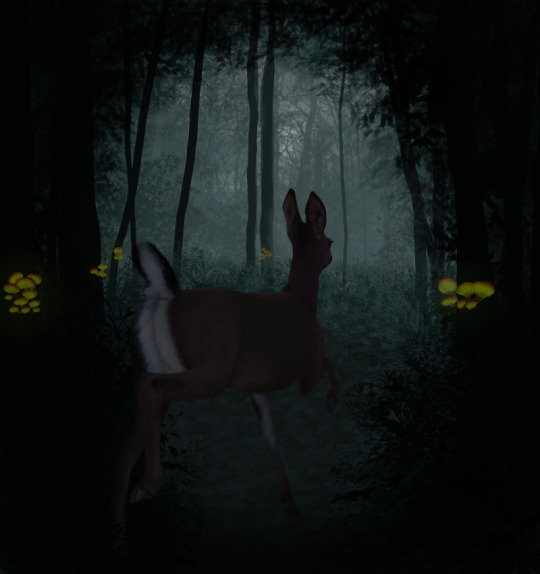
Deercember Day Twenty-Seven: Columbian Black-tailed Deer | Will-o'-wisp
The Columbian black-tailed deer or blacktail (Odocoileus hemionus columbianus) is found in western North America, from Northern California into the Pacific Northwest of the United States and coastal British Columbia in Canada. East of the Cascade and Sierra Nevada Ranges in Oregon and California, black-tailed deer are replaced by other mule deer which have a different tail pattern. They have sometimes been treated as a species, but virtually all recent authorities maintain they are subspecies of the mule deer (Odocoileus hemionus). Strictly speaking, the black-tailed deer group consists of two subspecies, as it also includes Odocoileus hemionus sitkensis (the Sitka deer). Despite this, the mtDNA of the white-tailed deer and mule deer are similar, but differ from that of the black-tailed deer. This may be the result of introgression, although hybrids between the mule deer and white-tailed deer are rare in the wild (apparently more common in West Texas), and the hybrid survival rate is low even in captivity. These two subspecies thrive on the edge of the forest, as the dark forest lacks the underbrush and grasslands the deer prefer as food, and completely open areas lack the hiding spots and cover they prefer for harsh weather. One of the plants that black-tailed deer browse is western poison oak, despite its irritant content. During the winter and early spring, they feed on Douglas fir, western red cedar, red huckleberry, salal, deer fern, and lichens growing on trees. Late spring to fall, they consume grasses, blackberries, apples, fireweed, pearly everlasting, forbs, salmonberry, salal, and maple. More information here.
References: Deer, Background, Mushrooms 1, Mushrooms 2.
#this went better than I ever could have hoped or expected and may be my new favourite#this one is special to me because this subspecies of mule deer is exactly the same#as lives on the property where Stan and I will be building our home#and is one of only a handful of deer who I've had the honour of seeing in person#the mushroom species is the western jack-o'-lantern mushroom (Omphalotus olivascens) native to California and Mexico#shoutout to my bestie Wind for the amazing suggestion for a natural will-o'-wisp#I am‚ quite frankly‚ blown away with myself today#Deercember#realHum#Art#Drawing#deer#deer art#Columbian black-tailed deer#Columbian blacktail deer#Columbian blacktail#black-tailed deer#blacktail deer#blacktail#Odocoileus hemionus columbianus
5 notes
·
View notes
